Abstract
Numerous studies have shown that the receipt of adequate prenatal care is associated with improvements in pregnancy outcome, particularly a reduction in the risk of low birth weight. Since medical costs for these low birth weight infants are several times higher than for normal birth weight infants, one would expect that medical costs for newborns would be lower for babies whose mothers have had adequate prenatal care than for those with inadequate prenatal care. Explored in this paper is whether the reduction in Medicaid costs for newborn and post-partum maternal care is greater than the increase in prenatal costs for a Medicaid population. The analysis used a file of 12,023 Missouri Medicaid records linked with the corresponding 1988 birth certificates. A modified version of the Kessner index was used to define the adequacy of prenatal care. Prenatal care costs were $233 higher for pregnancies with adequate prenatal care than for those in which prenatal care was inadequate. Newborn and post-partum costs starting within 60 days after the birth were $347 lower for the adequate prenatal care pregnancies, resulting in a savings of $1.49 for each extra $1 spent on prenatal care. Among the other factors studied in determining this benefit to cost ratio were global billing, Supplemental Food Program for Women, Infants, and Children (WIC), and participation in Medicaid under the expanded eligibility provisions that were effective in Missouri in 1988.
Full text
PDF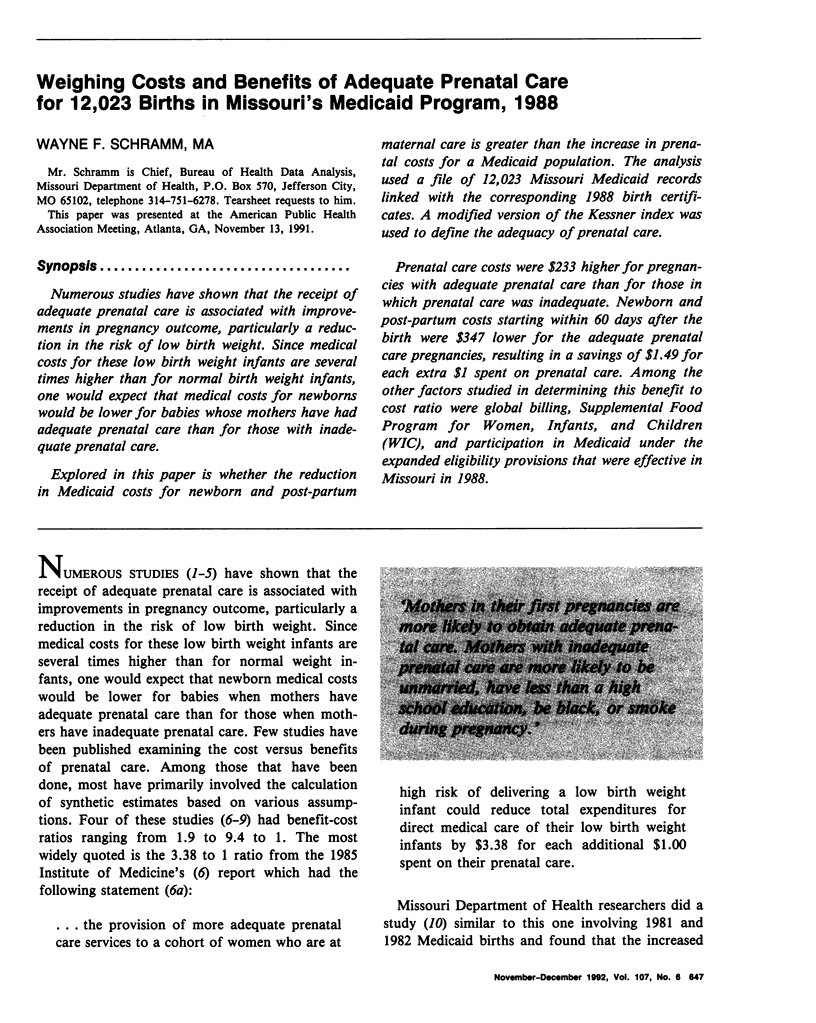
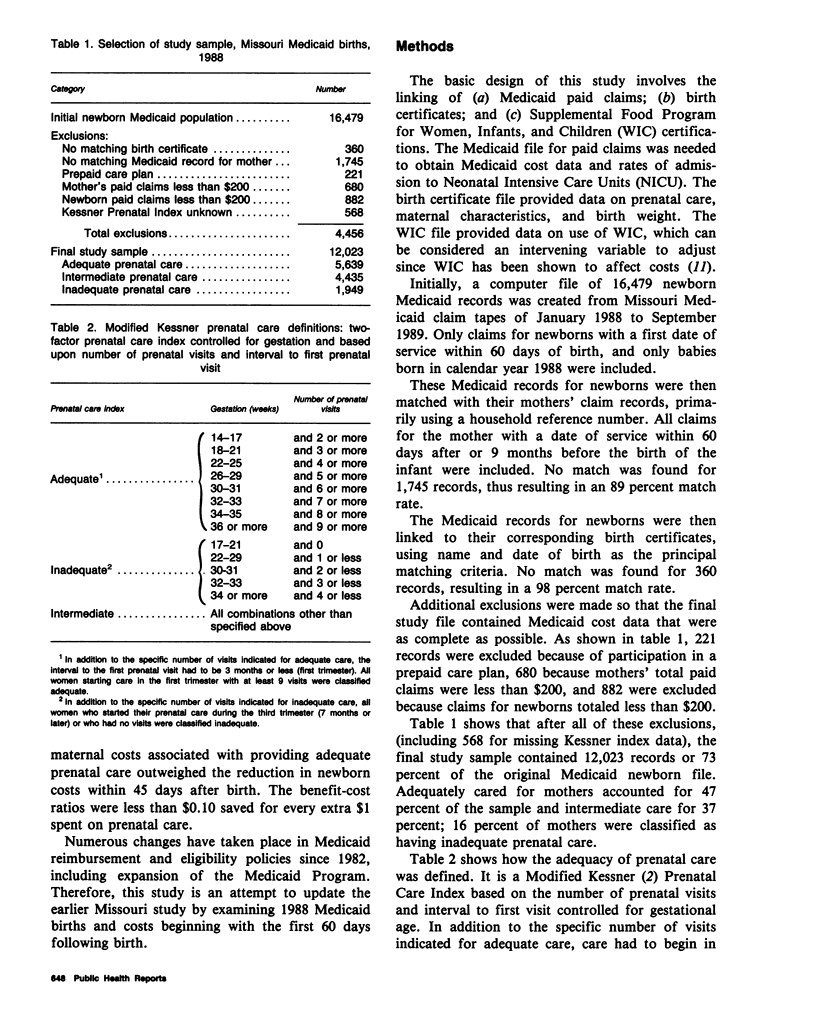
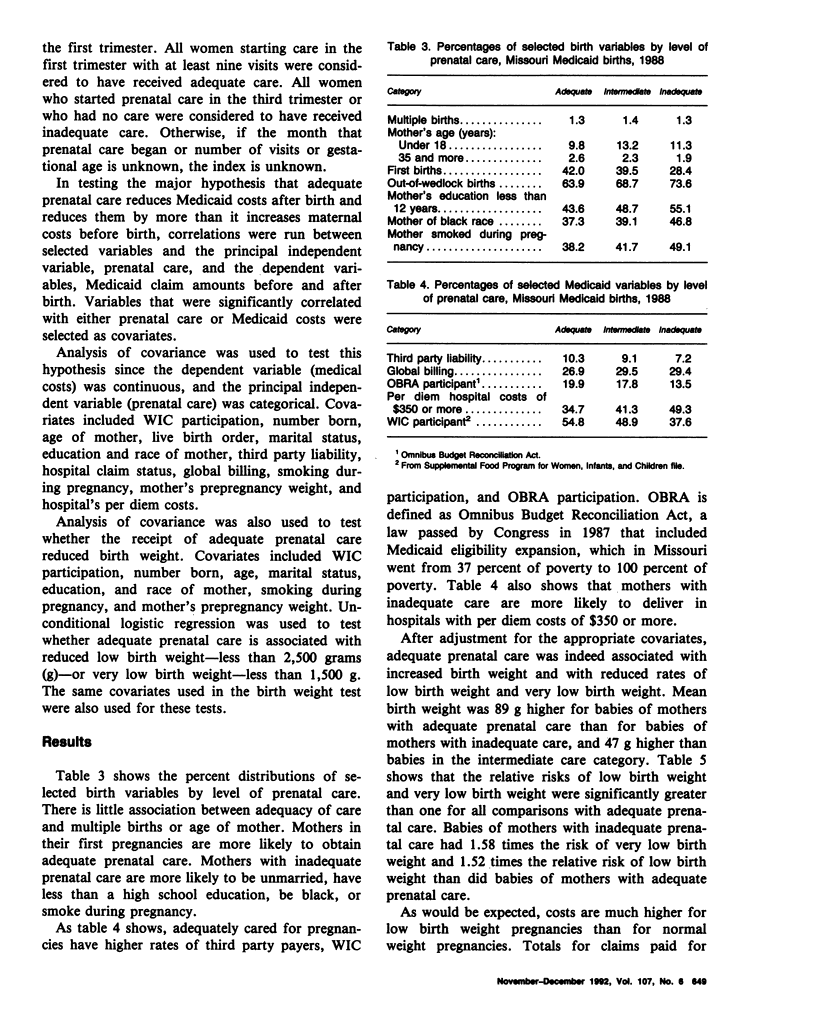
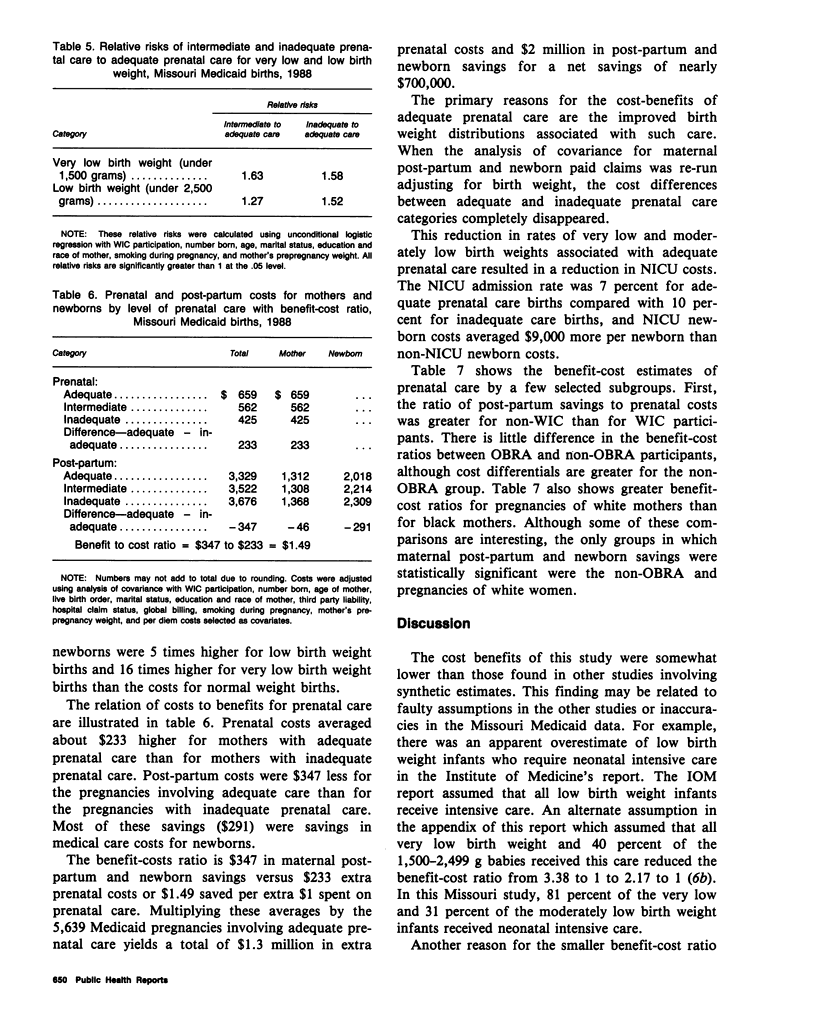
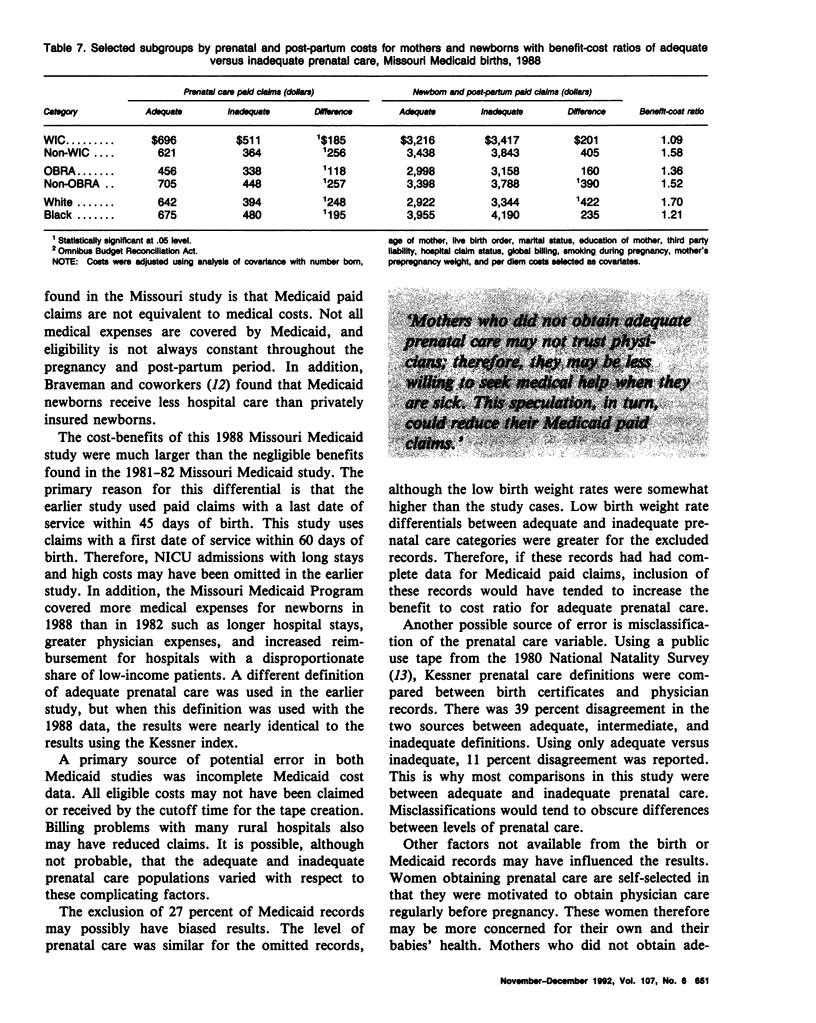
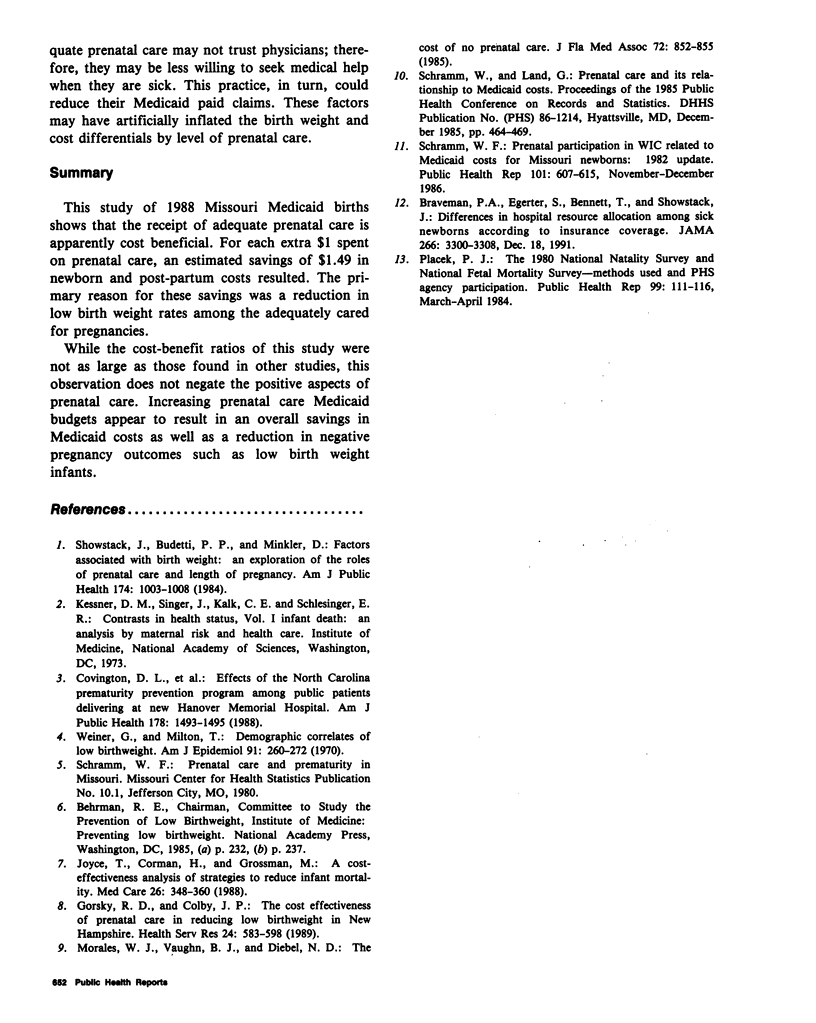
Selected References
These references are in PubMed. This may not be the complete list of references from this article.
- Braveman P. A., Egerter S., Bennett T., Showstack J. Differences in hospital resource allocation among sick newborns according to insurance coverage. JAMA. 1991 Dec 18;266(23):3300–3308. [PubMed] [Google Scholar]
- Covington D. L., Carl J., Daley J. G., Cushing D., Churchill M. P. Effects of the North Carolina Prematurity Prevention Program among public patients delivering at New Hanover Memorial Hospital. Am J Public Health. 1988 Nov;78(11):1493–1495. doi: 10.2105/ajph.78.11.1493. [DOI] [PMC free article] [PubMed] [Google Scholar]
- Gorsky R. D., Colby J. P., Jr The cost effectiveness of prenatal care in reducing low birth weight in New Hampshire. Health Serv Res. 1989 Dec;24(5):583–598. [PMC free article] [PubMed] [Google Scholar]
- Joyce T., Corman H., Grossman M. A cost-effectiveness analysis of strategies to reduce infant mortality. Med Care. 1988 Apr;26(4):348–360. doi: 10.1097/00005650-198804000-00004. [DOI] [PubMed] [Google Scholar]
- Morales W. J., Vaughn B. J., Diebel N. D. The cost of no prenatal care. J Fla Med Assoc. 1985 Oct;72(10):852–855. [PubMed] [Google Scholar]
- Placek P. J. The 1980 National Natality Survey and National Fetal Mortality Survey--methods used and PHS agency participation. Public Health Rep. 1984 Mar-Apr;99(2):111–116. [PMC free article] [PubMed] [Google Scholar]
- Schramm W. F. Prenatal participation in WIC related to Medicaid costs for Missouri newborns: 1982 update. Public Health Rep. 1986 Nov-Dec;101(6):607–615. [PMC free article] [PubMed] [Google Scholar]
- Showstack J. A., Budetti P. P., Minkler D. Factors associated with birthweight: an exploration of the roles of prenatal care and length of gestation. Am J Public Health. 1984 Sep;74(9):1003–1008. doi: 10.2105/ajph.74.9.1003. [DOI] [PMC free article] [PubMed] [Google Scholar]
- Wiener G., Milton T. Demographic correlates of low birth weight. Am J Epidemiol. 1970 Mar;91(3):260–272. doi: 10.1093/oxfordjournals.aje.a121135. [DOI] [PubMed] [Google Scholar]


